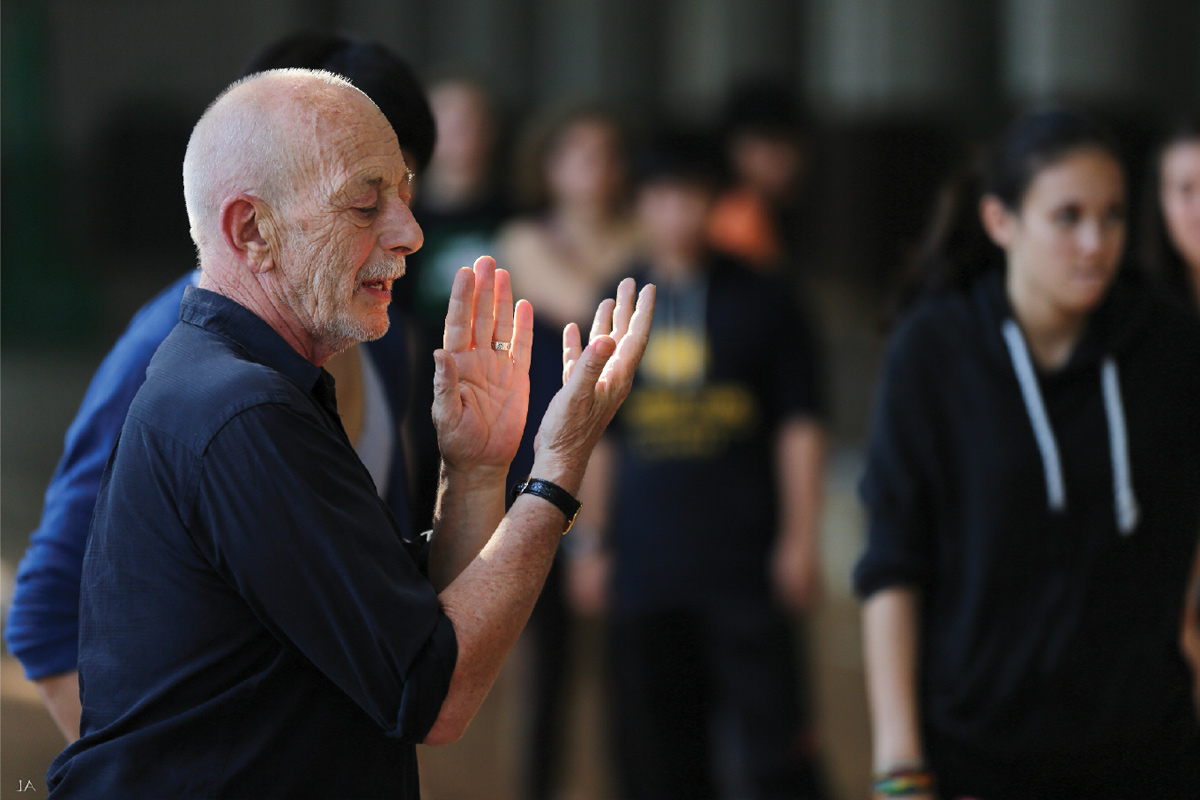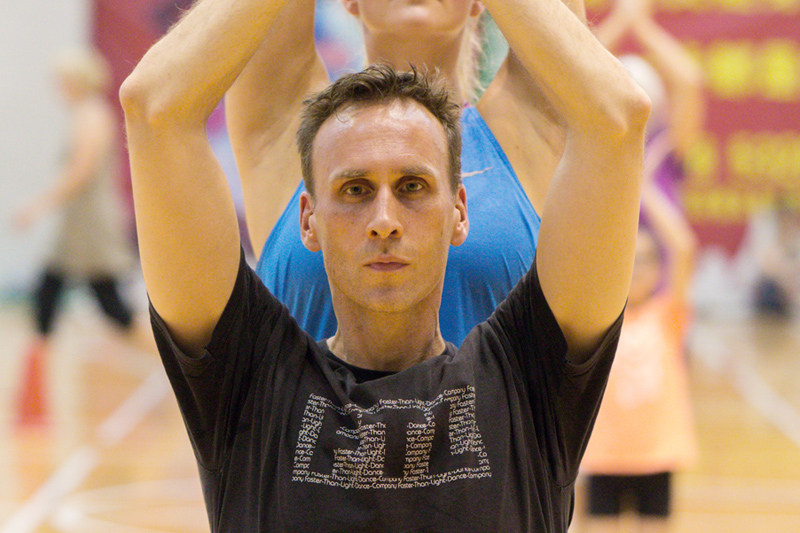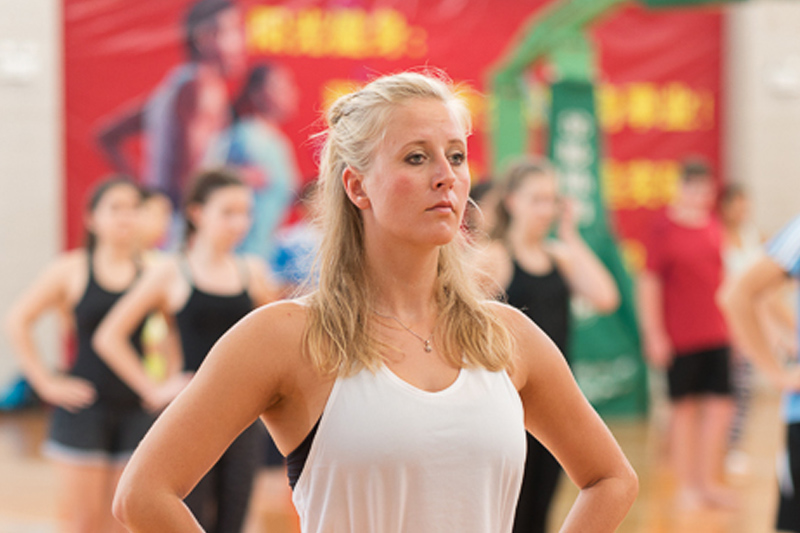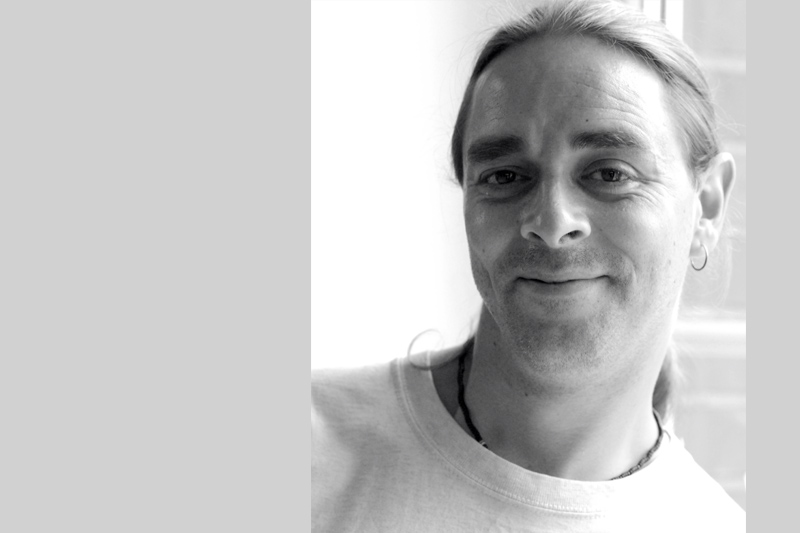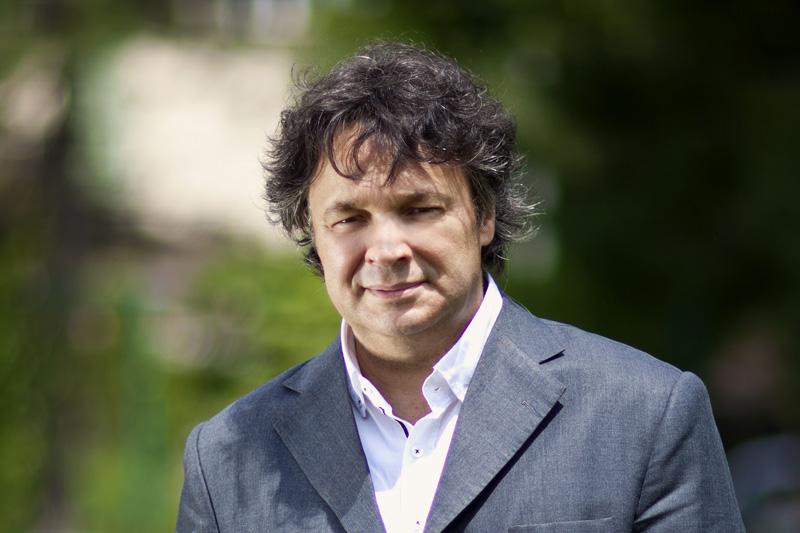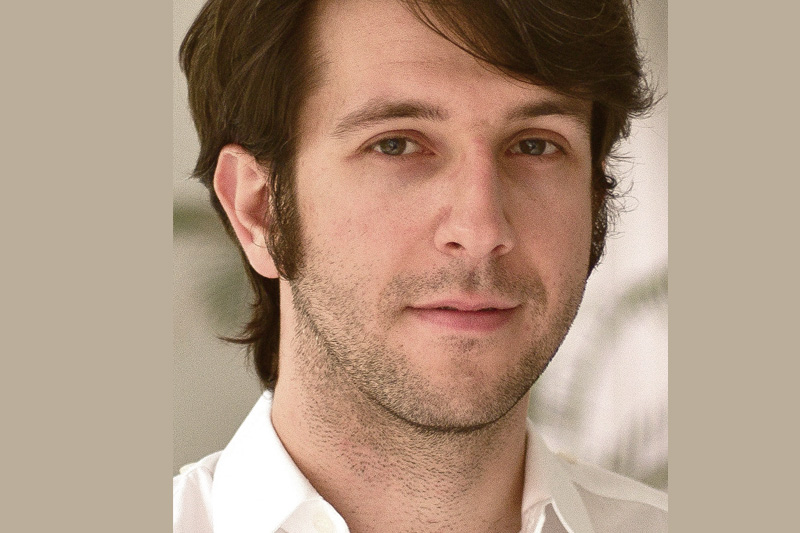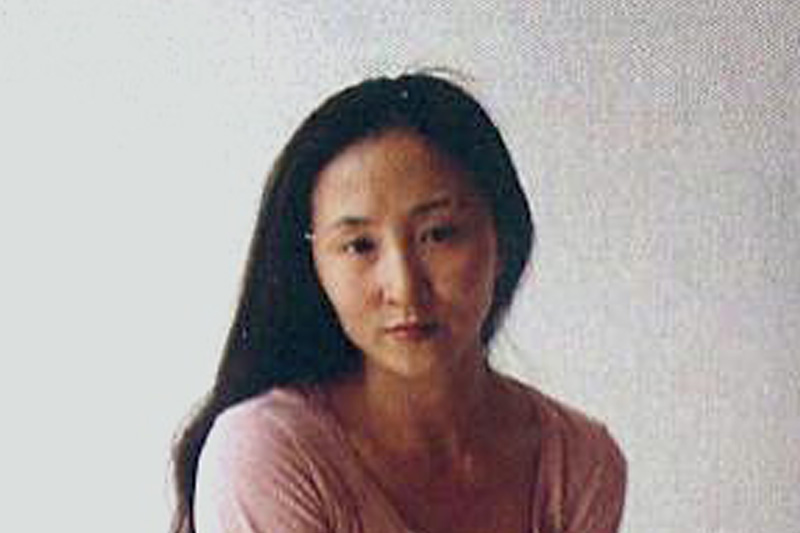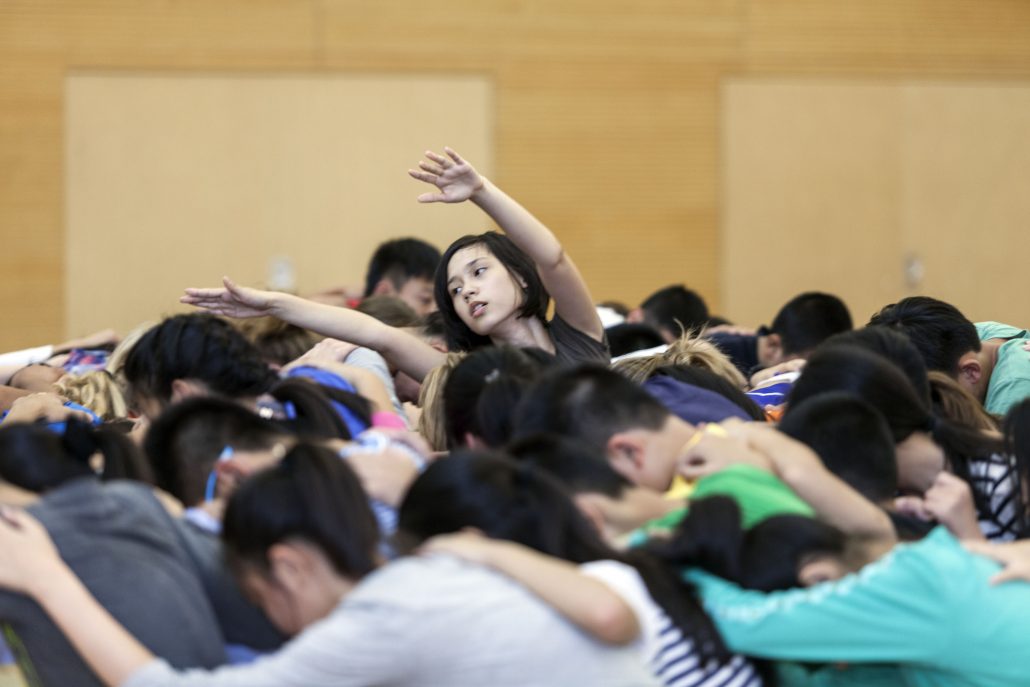On Stage
Training
Royston Maldoom, Artistic director and choreographer
Royston Maldoom is the founder of community dance and various dance projects around the world. He has initiated numerous dance projects in different countries and cooperated with a lot of dancers, regardless of gender, colors, races, social backgrounds or talents in dancing. He was awarded the Order of the British Empire (O.B.E.) by Queen Elisabeth II for his outstanding social activities and artistic workpieces.
“In my work there is no failure. Everybody must feel at ease, then they will develop self-confidence – as a group and as individuals.”
Volker Eisenach, Choreographer and rehearsal director
Volker Eisenach is a freelance choreographer, youth dance director and writer and has been leading international dance project for over 20 years. Since 2003 he has worked extensively with his former teacher Royston Maldoom for projects in Europe, North America and New Zealand.
Mia Sophia Bilitza, Choreographer and rehearsal director
In 2010 Mia began assisting Royston Maldoom and others worldwide in the field of community dance. As a freelance choreographer, she creates pieces for different age and ability groups in and outside Germany. 2014 she has been curator for dance and chief choreographer in the international art festival new talents biennale cologne and has been training the professional dance company “El Funoun Palestinian Popular Dance Troupe” as well as their junior dance group this summer.
Pete Ayres, Lighting Designer
Pete Ayres graduated with a B.A. (Hons.) in Technical Theatre Arts, specialising in Lighting Design. He has worked extensively in the field of Contemporary Dance, designing for Royston Maldoom for more than 15 years.
more
Pete has worked in a variety of venues – from African amphitheatres, Berlin bus depots, Croatian castles and metropolitan motorways to nationally important playhouses such as The Royal Albert Hall, The Place Theatre and The South Bank (London), Schauspielhaus (Hamburg), The Cultural Centre, Kaunas (Lithuania), and Addis Ababa City Hall (Ethiopia). He has been involved in several Community Dance projects – including orchestral productions with Berlin Philharmonic Orchestra, Russian National Orchestra, London Symphony Orchestra and Carnegie Hall in New York, among others – often including hundreds of participants, ranging from street children in Peru and groups of mixed ability performers, to Senior Citizens of Germany and young women of immigrant families.
Patrick Souillot, Conductor
Born in 1964, Patrick Souillot began his musical education at the Conservatory of Besancon, at the age of 6 and studied in Strasbourg, Reims and Paris. In 1986, he was noticed by Maestro Leonard Bernstein and invited to become his pupil and shortly after, his assistant. He reached semi-finals in the Besançon International Competition and was awarded first Prize at the Davidoff International Competition in Hamburg. In September 2001, he was invited by Sir Colin Davis to conduct The Planets by G. Holst with the London Symphony Orchestra during the “Conducting Discovery Day” event.
more
Ever since, he has conducted numerous renown orchestras in Doha, Hong Kong, Cannes, Toulouse, Paris, Grenoble, Montpellier, Avignon, Sofia, Ankara, Moscow, Riga, London and many others. Since 2006, Patrick Souillot has devoted part of his energy to work on operas. He has conducted Mozart’s Magic Flute, Verdi’s Traviata, Aïda, Nabucco and West Side Story, Carmen, Don Giovanni. He then created “La Fabrique Opéra” (Literally “Opera Manufacturing”), a new concept that provides the opportunity for everyone to reach the world of Opera, especially the underprivileged youth. His very large repertory includes pieces from the early Baroque period to contemporary music. He has often collaborated with composers from all over the world to create new pieces. He is first guest conductor of the Eskisehir Symphony Orchestra (Turkey). He has recorded many CDs including rare works (Mc Donald, Suesse …)
Oskar Jezior, Pianist
Born in 1985 in Warsaw, Oskar Jezior grew up in Bremen, Germany. At the age of six he received his first violin lessons. Piano lessons started shortly after and his early years have allowed a prodigious talent to develop in several directions. Aged 15 he was Bremen’s youngest ever student accepted into the “Hochschule für Künste”.
more
In 2012 he completed his course at the Juilliard School in New York with Professor Matti Raekallio on piano. During his time at the Juilliard School, he won the Gina Bachauer Piano Competition 2011, and subsequently made his debut at the Lincoln Center, which was broadcast on New York radio station WQXR.
In 2006, with “Polskie Nagrania” he released his debut CD featuring Ludwig van Beethoven’s piano sonatas Op.106 “Hammerklavier” and Op.110. In 2007 he recorded songs by Wagner and Szymanowski with Malgorzata Walewska for DUX.
In 2010, he edited and wrote the screenplay for two documentary films: “Why Competitions”, a film about the Chopin piano competition in Warsaw, and “Wiem skad jestem”, an account of British-Polish violinist Ida Haendel’s life and work. He also produced the music score for both films.
In 2014 he became one of the co-founders and the Creative Director of the music school “Concord Music” in Shanghai. The school focusses on innovative teaching methods and provides music students with a bilingual learning environment.
Li Lingxi, Solo Dancer
The dancer and choreographer was born in Harbin in 1975. In 1992 she graduated in “classic ballett” and “traditional Chinese dancing” from the dancing academy of the Chinese Army in Beijing and became a member of the “Chinese Army Dancing Group”.
more
In 2000 she started to dance in the “Jinxing Modern Dance Company” in Shanghai following her interest in modern dancing. Not only had she successful engagements as freelance dancer and choreographer in Norway, Czech Republic, Italy and Germany but also took part in international dancing cooperations like the “Schlossakkord-Festival” in Germany (2010), “Amsterdam Dance Festival” (2011) and “Theaterfestival Berlin” (2014). Li Lingxi is an extraordinary engaged and talented artist, who enjoys experimenting with modern and traditional forms of dancing. The elements of her choreography are often based on traditional Chinese dances, which she successfully enterpretes in a very individual and modern way.
Amie Gutierrez Hoppe, Costume Designer
Amie Gutierrez Hoppe is a Philippine borne American fashion designer, creative consultant and a mother living in Shanghai. After having studied fine arts at the Philippine Women’s University in Manila, her true calling in fashion design emerged when she landed a job with a hip women’s clothing manufacturer in Los Angeles. Now she owns an online shop (www.AmieOhAmie.com), selling her own line: “Stylin’ Patriotic”. A collection of sporty and trendy apparel for the ueber-sports-fan fashionistas. As Costume Designer Amie supported Harmony Shanghai in 2012 by providing beautiful costumes for the “Firebird” performance. This year she designed outstanding pieces for “Le Sacre du Printemps”.
Dancers
Deutsche Schule Shanghai Eurocampus 上海德国学校欧洲校区
- Viktoria Eichengrün
- Nadine Eigenmann
- Joris Günther
- Konrad Günther
- Jana Hemann
- Marlena Hering
- Maren Huckfeldt
- Laura Jansen
- Madeleine Jansen
- Rebecca Keller
- Paula Kroener
- ShiXiao Li
- Julia Liebscher
- Sarah Martz
- Natalia Möller
- Josefine Pöge
- Carolin Rohleder
- Sabrina Sasse
- Susi Steinmayer
- Lotte Tang
- Vanessa Veit
- Louis Wang
- Yuntao Wang
- Jenny Wu
- Janette Xia
- Kathrin Huckfeldt
Deutsche Schule Shanghai Pudong 上海德国学校浦东校区
- Salomé Becker
- Mona Lina Bunzel
- Anabela Dordic
- Charlotte Guddat
- Audrey Hartmann
- Lisa Jürgens
- Lina Kuhl
- Beatrice Paksa
- Mauricio Rocktäschel
- Jannis Sowietzki
- Julian Sowietzki
- Sophia Sowietzki
- Lioba Teßmann
- Jesler van Houdt
- Angela Wang
- Jolina Wechsung
- Diana Moon
- Irina Widiker
Lycée Français de Shanghai 上海法国学校
- Lucie Barthélémy
- Thaïs Fondeville
- Hugo Gentil
- Charlotte Lamboug
- Pauline Latchoumanin
- Claire Masson
- Charlène Meiller
- Séréna Paris
- Tara Perset
Minzhu School Shanghai 上海民主学校
- 晏海婷
- 晏睿睿
- 孙悦
- 晏惠
- 申舒雅
- 胡雅琴
- 刘馨忆
- 冯婷
- 董晶晶
- 朱茵
- 章晓宇
- 王雪
Shanghai Jiang Wan Middle School 上海江湾初级中学
- 王浩宸
- 陈运
- 翁德玮
- 吴乐申
- 孙振奇
- 张宸源
- 高骏晔
- 岳英俊
- 佟天
- 谭静远
- 陈飞扬
- 刘雨宸
- 侯宇海
- 杨家明
- 沈嘉华
- 戚宇轩
- 郝进
- 郝宇轩
- 钱永嘉
- 吴培浩
- 肖行健
- 金倚亭
- 周蔚佳
- 陈星暇
- 范蕾蕾
- 庄梁
- 吕晓慧
- 李天仪
- 田文颖
- 魏漪蓉
- 章毅慧
- 卞晨泽
- 张依雯
- 顾佳惠
- 童思怡
- 包盈
- 李文艳
- 章毅文
- 董可一
- 叶方圆
- 王佳雯
- 程方南
- 王若雯
- 周佳云
- 何昕怡
- 徐嘉怡
- 俞嘉敏
Jiangsu Taicang Secondary Vocational School 江苏太仓中等专业学校
- 杨玉玲
- 王艳
- 蒋敏兰
- 陈艳芳
- 舒雅
- 曹玲
- 庞伟伦
- 王志扬
- 张文韬
- 朱僖南
- 周渝
- 徐敏杰
- 高瑞
- 诸凯
- 顾承杰
- 汤歆宇
- 李健
- 闵杨杨
- 丁洋
- 丁友清
- 高家辉
- 方春宇
- 石天航
- 阮鸣峰
- 丁明红
- 李楠楠
- 陆贝羽
- 施逸
- 李思婷
- 张晶晶
- 陈煦晖
- 周红
- 韩璇璇
- 陆雨晨
- 薛心雨
- 陈航宇
- 徐云飞
- 薄启洲
- 周溢
- 马智豪
- 王天之
- 丁若南
- 李娜
- 王鑫
- 陈志聪
- 冯姗
- 赵阳
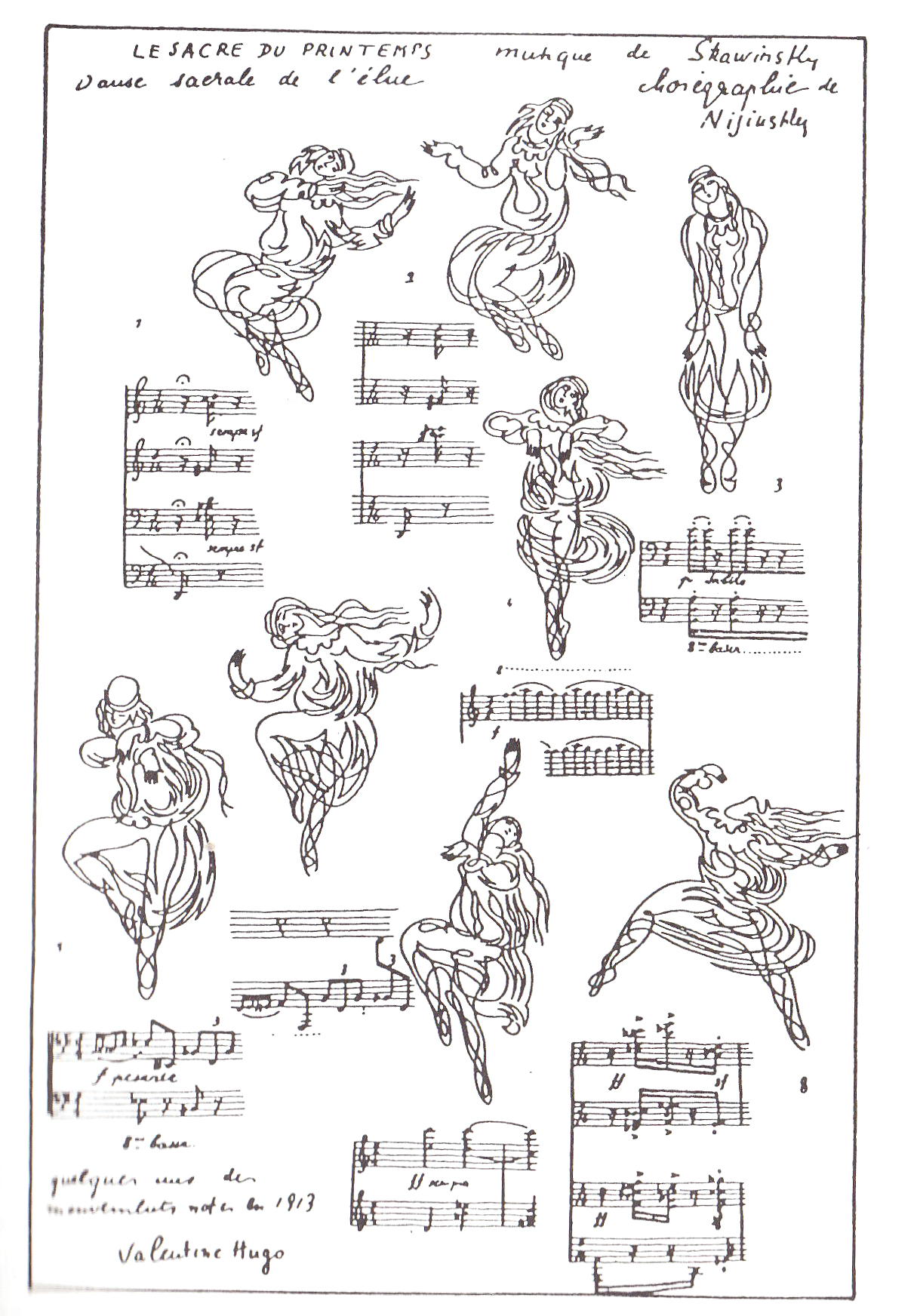
Drawing of Marie Piltz in the “Sacrificial Dance” from The Rite of Spring, Paris, 29 May 1913
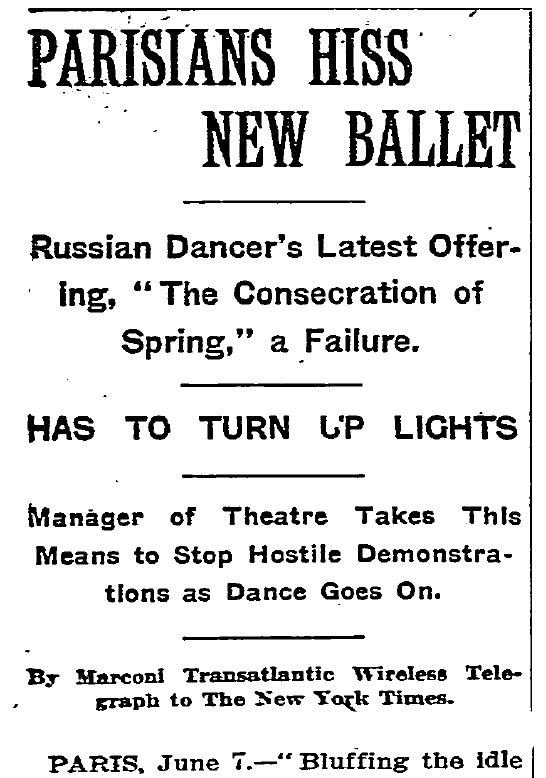
The New York Times reported the sensational Rite premiere on 29 May 1913
Story
Igor Stravinsky’s two-act ballet portrays a tribe through several scenes with various processions celebrating the advent of spring. A young woman is finally chosen as a sacrificial victim to dance to death for the sake of communal continuity.
Igor Stravinsky‘s “Le Sacre Du Printemps”
Igor Stravinsky, was born in Oranienbaum near to St. Petersburg on June 17, 1882. His musical education started with piano lessons at home when he was ten. He finished a university law course before he decided to become a musician.
In 1913 Stravinsky’s “Le Sacre du Printemps” debuted in Paris, leading to riots in the streets. The great ballet ushered in the 20th century and modernism to music, and ticked off those whose sensibilities were jarred by the atonal, primal avant-garde.
Over the years, “Le Sacre du Printemps” has remained Stravinsky’s best known work. This is due, in part, to the fact that in addition to its musical uniqueness, it serves as a virtual compendium of the early twentieth century music vocabulary. More specifically, as a result of the work’s seemingly unromantic, asymmetrical, and violent nature, “Le Sacre du Printemps” is often classified as the prime example of musical primitivism.
Some of those in attendance to see the premiere would already have been familiar with the young Russian composer Igor Stravinsky through his 1910 ballet “L’Oiseau de feu” (The Firebird). But if they expected his newest work to proceed in the same familiar and pleasing vein as his first, they were in for a surprise. From the moment the premiere performance of Stravinsky’s began, it was clear that even a sophisticated audience was totally unprepared for something so “different”. The composer Puccini, described the choreography as ridiculous and the music cacophonous.
Stravinsky’s earliest conception of “Le Sacre du Printemps” was in the spring of 1910. Stravinsky writes, “… there arose a picture of a sacred pagan ritual: the wise elders are seated in a circle and are observing the dance before death of the girl whom they are offering as a sacrifice to the god of Spring in order to gain his benevolence.“ This became the subject of “Le Sacre du Printemps”. In the scenario, after various primitive rituals celebrating the advent of spring, a young girl is chosen as a sacrificial victim and dances herself to death.
Stravinsky’s score contains many novel features for its time, including experiments in tonality, metre, rhythm, stress and dissonance. Analysts have noted in the score a significant grounding in Russian folk music, a relationship Stravinsky tended to deny. The music has influenced many of the 20th-century’s leading composers, and is one of the most recorded works in the classical repertoire.






